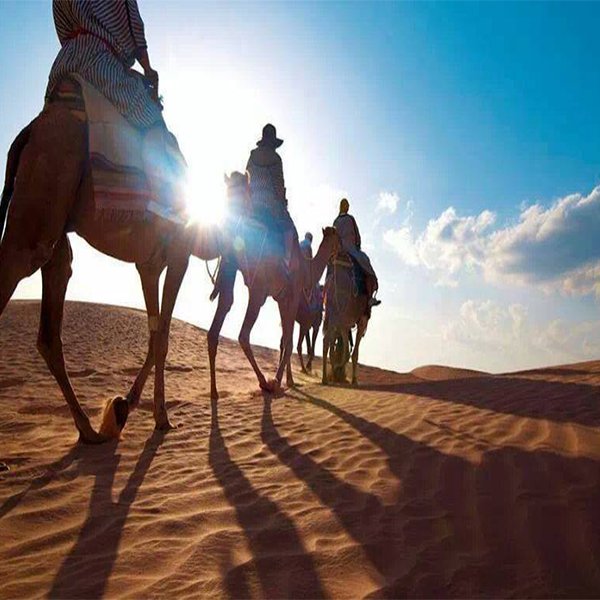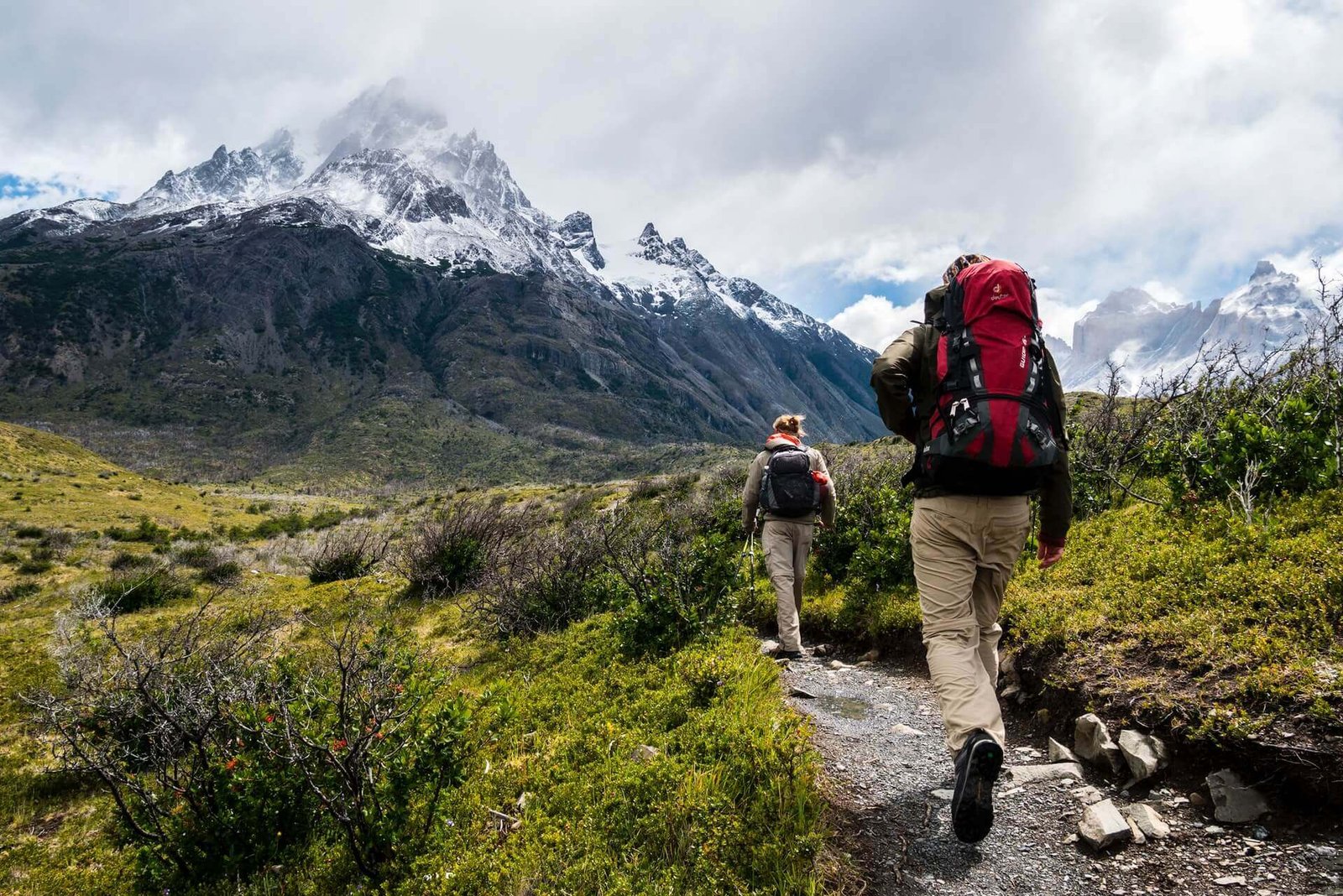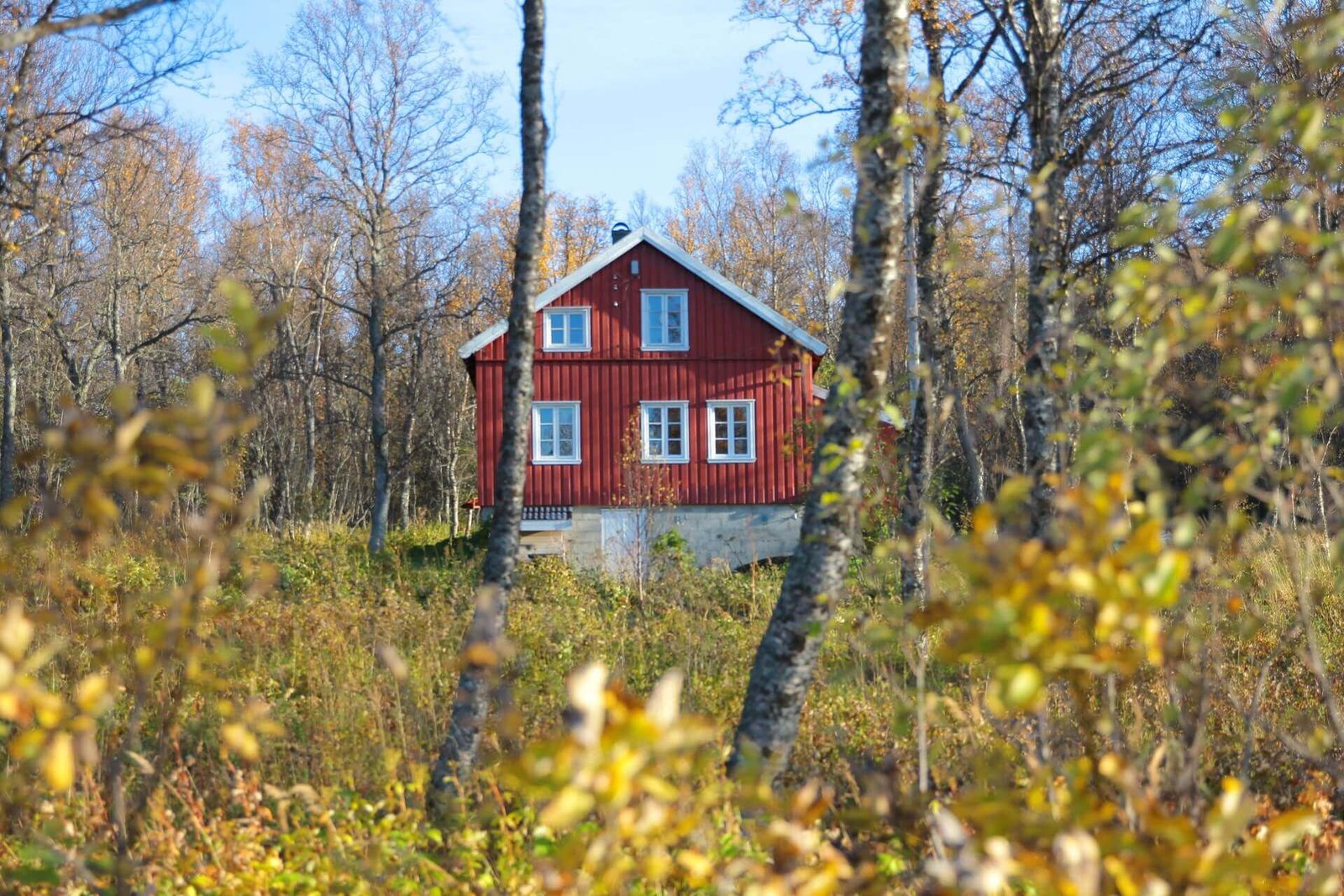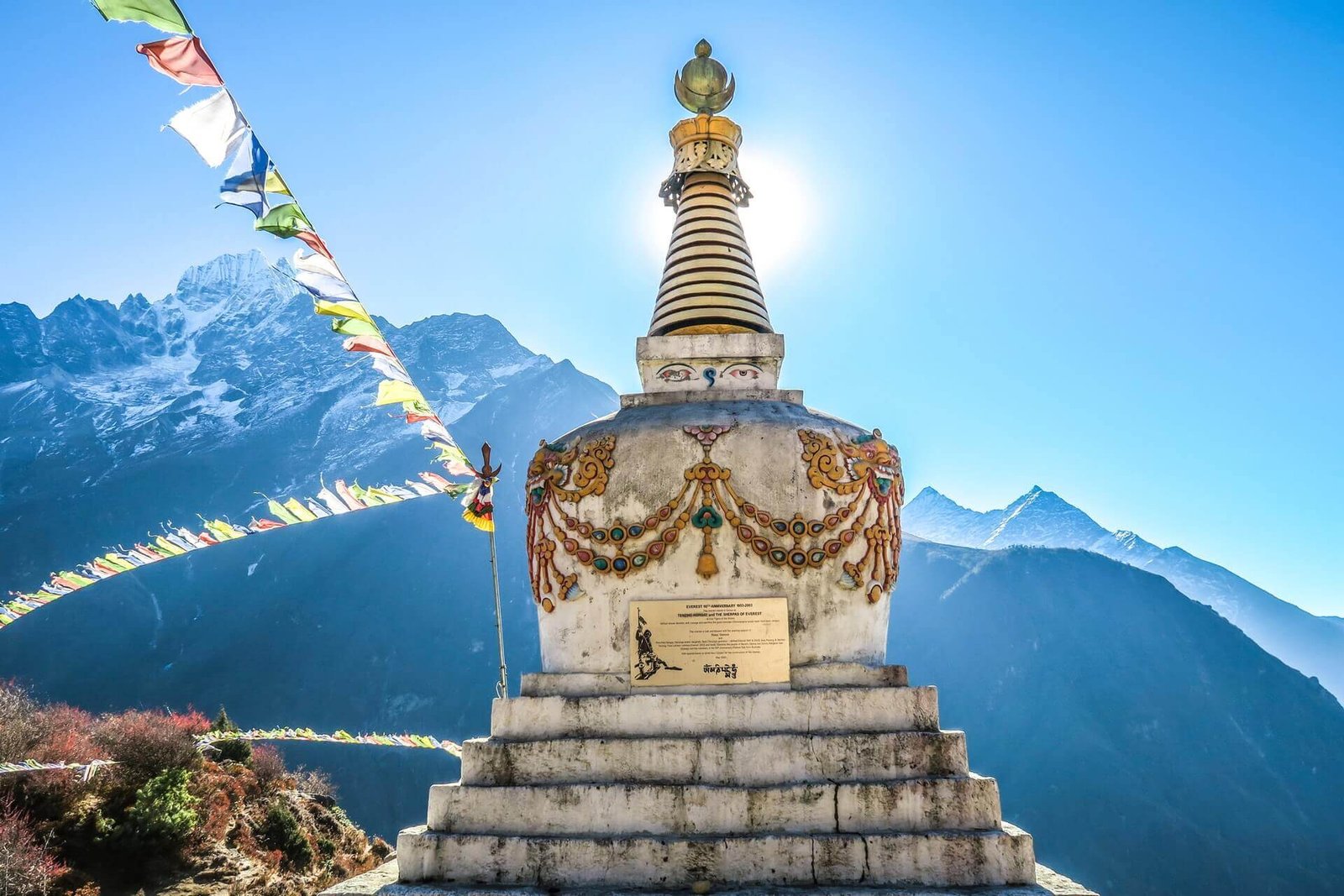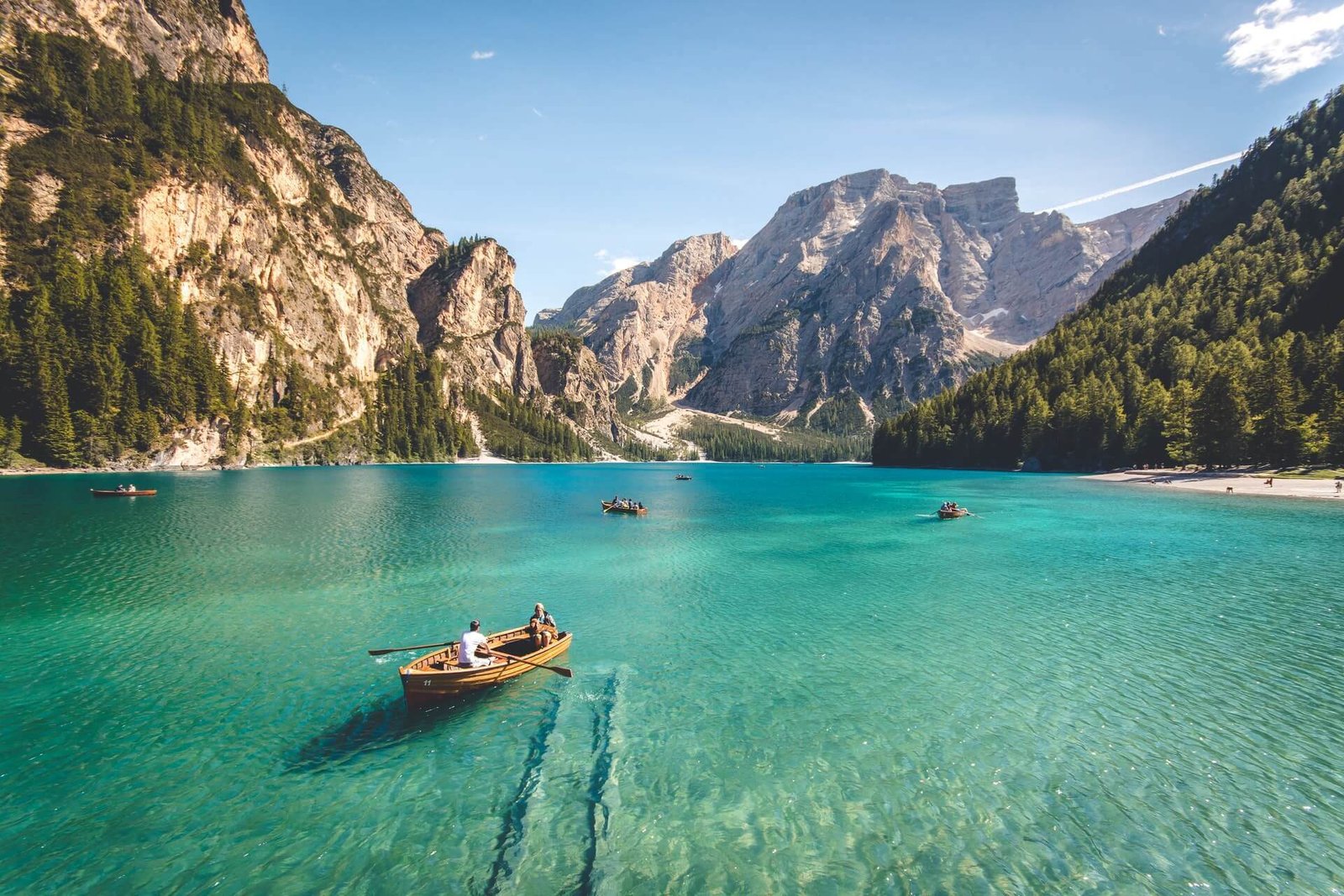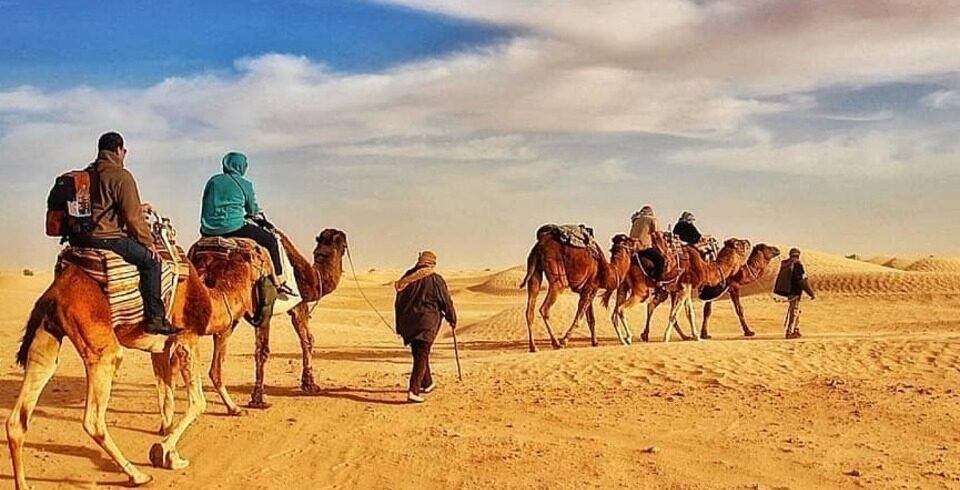Experience the magic of the Tunisian Sahara on camelback and immerse yourself in the timeless beauty of the desert. This tour takes you on a journey through golden dunes, hidden oases, and historic desert paths, all at the gentle pace of a camel ride. Perfect for travelers seeking an authentic and peaceful desert adventure.
Trip Highlights:
- Ride camels across endless golden dunes and explore the Sahara like ancient nomads.
- Visit stunning oases such as Chebika, Tamerza, or Midès, where palm trees and springs create a serene desert landscape.
- Enjoy breathtaking sunsets over the dunes—perfect for photography or simply soaking in the beauty.
- Experience traditional Saharan culture with stops at desert villages and interactions with local guides.
- Optional overnight stay in a desert camp, featuring traditional meals, music, and stargazing.
Itinerary Overview:
- Morning: Pick up and meet your guide. Begin your camel trek across scenic dunes.
- Midday: Stop at an oasis or desert landmark for photos and light refreshments.
- Afternoon: Continue the trek to your camp or designated endpoint, experiencing the quiet beauty of the desert.
- Evening: Enjoy traditional Saharan dinner and relax under the stars (if overnighting).
Why Choose This Trip?
- Safe and comfortable camel rides suitable for all ages.
- Small groups for a more personal and immersive experience.
- Learn about desert life, traditions, and natural landscapes from experienced guides.
- Capture unforgettable memories and photos in one of the world’s most iconic deserts.
The Sahara Camel Tour offers a unique combination of adventure, culture, and tranquility—an experience that stays with you long after the desert fades from view.
Overview
The Tiananmen, a gate in the wall of the Imperial City, was built in 1415 during the Ming dynasty. In the 17th century, fighting between Li Zicheng’s rebel forces and the forces of the Manchu-led Qing dynasty caused heavy damage to, or even destroyed, the gate. Tiananmen Square was designed and built in 1651, and has since been enlarged by four times its original size in the 1950s.
Near the centre of the square stood the “Great Ming Gate”, the southern gate to the Imperial City, renamed “Great Qing Gate” during the Qing dynasty, and “Gate of China” during the Republican era. Unlike the other gates in Beijing, such as the Tiananmen and the Zhengyangmen, this was a purely ceremonial gateway, with three arches but no ramparts, similar in style to the ceremonial gateways found in the Ming tombs. This gate had a special status as the “Gate of the Nation”, as can be seen from its successive names. It normally remained closed, except when the Emperor passed through. Commoner traffic was diverted to side gates at the western and eastern ends of the square, respectively. Because of this diversion in traffic, a busy marketplace, called “Chess Grid Streets”, was developed in the big, fenced square to the south of this gate.
Trip Highlights
- Trek to the world-famous Everest Base Camp
- Enjoy the amazing view of the Himalayas from Kala Patthar
- Travel through the Sherpa villages of Namche, Khumjung, Khunde, and Dingboche
- Visit Tengboche the biggest and oldest monastery n the region.





